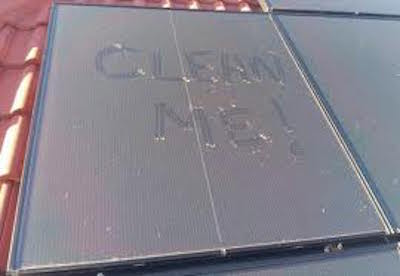
Newly published research by Engineering researchers from Kathmandu found that a dusty panel gathers 29.8% less energy if they are not cleaned for 5 months in dry weather – we are surprised it is not more.
The findings in Elsevier-published Solar Power magazine studied “soiling and its effect on performance of solar modules in regions with a high deposition of dust and low frequency and less intensity of rain.” But some areas with abundant rainfall may also suffer from high dust deposits in the dry season. Kathmandu, with its peculiar environment conditions, suffers high air pollution and minimum rainfall during the dry winter. The study measured the effect of dust on PV modules taking into account meteorological variables for Kathmandu .
During the study period of 5 months, the efficiency of a dusty solar module left to untouched decreased by 29.76% compared to a similar module which was cleaned on daily basis.
Dust deposit density on the uncleaned PV module accounted to 9.6711 g/m2 over the study period. The research also showed that dust accumulation is concentrated on the lower half of the PV modules with a consequent risk of hot spots which could eventually lead to permanent module damage.
The research was carried out by Basant Raj Paudyaland Shree Raj Shakya of the Institute of Engineering at Tribhuvan University, Kathmandu